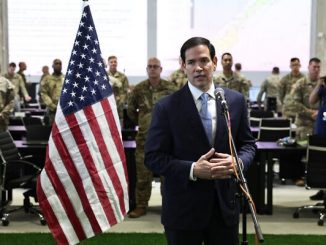
Palestinians residents report that Israel’s army is demolishing the remaining ruins of Rafah, located on the southern edge of the Gaza Strip..There are growing fears that this is part of a broader plan to force the population into a large confinement camp on barren land.
| Published April 29, 2025
“Rafah in Ruins: Gazans Fear Forced Confinement Amid Ongoing Blockade”
In the southern reaches of the Gaza Strip, the city of Rafah lies in devastation. Once a bustling urban center, it has been reduced to rubble by relentless Israeli military operations. Residents now voice deep concerns that this destruction is part of a broader strategy to forcibly relocate and confine them into designated zones under strict control.
Since the collapse of a six-week ceasefire in early March, Israel has intensified its ground campaign, seizing significant portions of land and declaring “buffer zones” around Gaza’s periphery, including the entirety of Rafah, which accounts for about 20% of the territory. The Israeli military has not officially commented on reports suggesting the establishment of a new “humanitarian zone” in Rafah, intended to house civilians after security screenings to exclude Hamas fighters. Aid within this zone would reportedly be distributed by private companies .
The humanitarian situation in Gaza has reached a critical point. The World Food Programme announced that it has exhausted all food stocks in the region, marking the longest closure Gaza has faced. With bakeries shut down due to a lack of wheat flour and fuel, residents resort to foraging for wild plants and even consuming turtle meat to survive . The blockade, in place since March 2, has prevented the entry of essential food and medical supplies, exacerbating the crisis for the 2.3 million residents.
Amid these dire conditions, ceasefire negotiations continue. Mediated by Qatar and Egypt, talks aim to halt hostilities and address the humanitarian catastrophe. However, disagreements persist, particularly over the disarmament of Hamas and the terms of any potential truce .
The international community watches with growing concern as the situation in Gaza deteriorates. Calls for immediate humanitarian aid and a sustainable resolution to the conflict intensify, emphasizing the urgent need to alleviate the suffering of the Palestinian population and restore stability to the region.
SOURCES: REUTERS – Israel flattens Rafah ruins; Gazans fear plan to herd them there
NEWSMAX – Israel Flattens Rafah, Gazans Fear Relocation to Camp
MIDDLE EAST EYE – Israel’s army flattens Rafah, amid fears of mass confinement in Gaza




